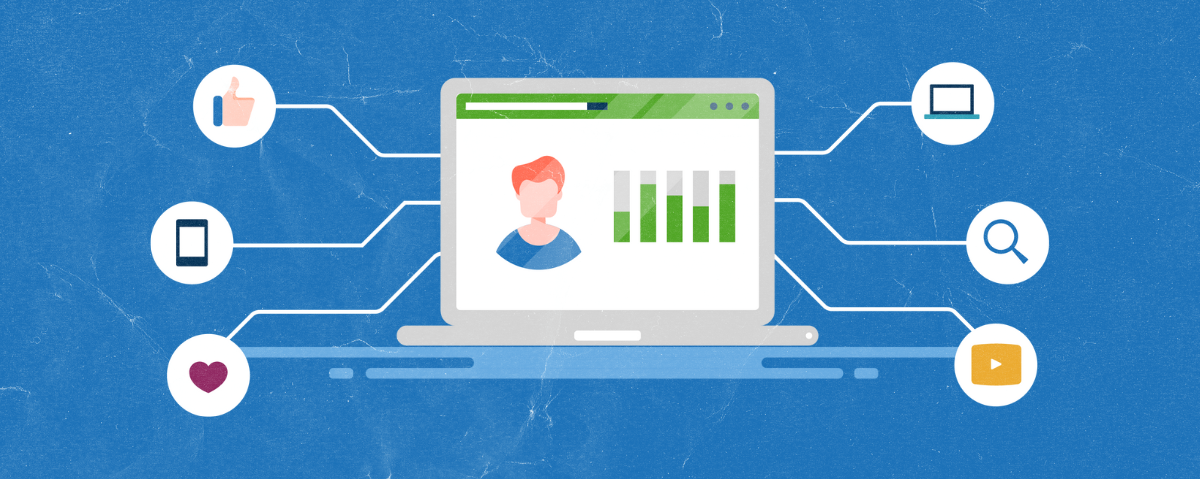
You know customer behavior impacts your bottom line, so how do you incentivize the right behaviors to maximize growth and profitability? Chris Kennedy-Sloane, Business Consultant at Vendavo, explains the framework you need to define and prioritize desired customer behaviors, plus how the right rebate program can make a huge difference.
When we talk about customer behavior in business, we mean what you want customers to do to positively impact your bottom line. Countless actions fall into that category, including:
- Purchasing more products
- Buying more of a product category
- Subscribing
- Making repeat purchases
- Maintaining utilization rates
- Creating opportunities to quote for deals
- Paying on time
- Paying in a certain format
- Keeping minimum stocking levels
- And more
Desired customer behavior largely depends on your business and operational goals. What works for one organization won’t work for another. You need to understand how customer behavior impacts your bottom line, where you are now, and what you want to achieve with rebates.
From there, you can examine where customer behavior is currently lacking and what you can incentivize to see change.
How to Define ‘Desired Customer Behavior’
Customer behavior is any action or decision customers make when interacting with a business, its products, or its services. Understanding customer behavior helps tailor marketing strategies, improve customer satisfaction, and ultimately drive sales. This is even more impactful if you’re focused on driving specific, “desired” customer behavior.
The process of defining desired customer behavior is inherently a multifunctional question.
If you spoke to your finance team, for example, they’d likely want more on-time or early payments, recurring revenue, more payments in a certain form – maybe a bank transfer rather than check. Your sales and distribution teams might note an interest in accurate forecasting.
Stakeholders throughout any business have their own frustrations around customer behavior. It can be challenging to parse out which are the most important, but these individuals and departments are the best sources for ideas about what could be truly valuable to your company.
Here are some tips to create a framework for valuing desired customer behaviors:
- Keep your business needs in mind
What’s ideal customer behavior will depend on your specific organization, so be sure to bring in the right stakeholders and overarching business goals for this conversation.
- Generate a list of ideal customer behaviors across your organization
Start by creating a mega list of all the “maybes” your various teams care about in terms of focus. Write down anything that would happen in an ideal world for each department.
- Understand the execution
How realistic it is to incentivize those behaviors? Some, like early payment, are easy to measure. But others, like percentage category spend (where a customer is unlikely to give you audit rights), are more difficult.
- Identify what makes the most business sense
Look at the business value. Maybe you don’t actually care if your customer pays by check or bank transfer, so long as the money is received. But maybe you do want to generate more subscription revenue, because it’s guaranteed additional money and contractual.
- Determine what your customers will value
Will your customers also get something positive from this incentive? How much will they enjoy the process or outcome? Will they want to play in this dynamic?
Combine those steps, and you’ve got a framework to help prioritize the desired behaviors with the most potential to help you grow your bottom line.
Download the Full 2024-2025 Top Growth Drivers Report for Manufacturing and Distribution Here
How Rebate Programs Create an Advantage
Rebate strategies have a documented history of helping companies drive growth and profitability. Vendavo recently surveyed 300+ finance leaders and general managers at manufacturers and distributors in North America and Europe about the state of their growth, the strategies they are using to increase revenue and profitability, and how confident they are in their ability to remain agile while riding this economic roller coaster.
The result was the 2024-2025 Top Growth Drivers Report for Manufacturing and Distribution, with 86% of respondents from North America and 78% from Europe noting they use rebate programs to generate more revenue. 88% of each said the programs drive intended customer behavior, and 86% of the organizations that offer rebates said their customers love them.
The effectiveness of those programs is important, though. Here are some practical things to keep in mind as you’re considering desired customer behavior in your rebate offerings:
- The customer behavior you think you want isn’t always the behavior you actually need
Be careful how you design incentive programs, that the intended behavior is incentivized in the right way, and that you’ve addressed loopholes. Many programs reward purchasing at a certain value. This sounds good in theory, but in practice you’ll see that some customers will save up all their purchasing to make one enormous purchase in one quarter, then get a big payout in that quarter because that gets them more revenue than if they’d purchased smaller amounts over four quarters. Some even get bonuses for quarter-over-quarter growth, which ends up skewed if they skipped a quarter of purchasing and the metrics reset.
- Incentivize something inconvenient for you that your customer can easily resolve
The best rebate programs encourage change. Your customer gets paid to make an easy shift, and you get extra revenue, cashflow, compliance, or other benefits from it. The sweet spot is a rebate program where the customer says, “You know what? You’re the only person offering this. It’s really easy for me to provide anything that you need to pay it out. My behavior changes are costing me nothing and I get extra money.”
- Win-win situations are the ultimate goal
If you have a change in mind that you expect would positively impact your business, the chances are reasonably high that your customer will also be pleased that you’re incentivizing it. Maybe they’re buying from four suppliers because that’s how the sourcing has been set up, but amalgamating to buy from just gives them a growth rebate. They can then take advantage of earlier payments, so they get discounts for said payments and accurate reporting. That’s a lot of wins.
- Some non-win-wins can still work in rebate programs
These have to be carefully considered, like the cherry on top of the cake. Say you’re collaborating well, and your customer achieves four out of five intended outcomes every quarter, but there’s that fifth outcome that’s hard for them. Maybe they’re buying from a supplier and they’d have to revalidate the products’ characteristics for their supply chain or manufacturing, for example. You need to make it worth their while, because there might be many departments involved in the change. Normally they wouldn’t change, but they will if there’s enough money here for all parties to make it valuable.
The best rebate programs are about creating the path of least resistance for all parties. If you make it easy and worthwhile to make changes, your customers will likely be on board for adjustments. That creates growth and profitability for everyone involved.
3 Tips for Encouraging Desired Customer Behavior
If you’re starting a new set of incentive programs, we’ve got some tips to help you maximize adoption and impact.
- Make them easy
The Top Growth Drivers Report found nearly 60% of North American respondents and 70% from Europe find rebate programs to be painfully inefficient. Your rebate programs need to be easy to understand, easy for the customer to be influenced, and easy for the customer to want to agree to them. The system should create rewards over time. Create an environment where customers get used to understanding and succeeding at your rebate programs.
- Customization matters
As you develop and deepen relationships through programs over time, you need to build customization. Generic rebate programs can and do work, and should exist at an overall level. But for your key customers, you want those programs to make them think about their business. Every customer is unique and that’s how we should treat them from an incentive standpoint.
- Two-way communication is a must
Communication around those rebate programs is vital. They work best with a feedback loop. A customer may not tell you if the program doesn’t work for them. It’s more likely that without the opportunity to provide feedback, they’ll ignore the program entirely. A feedback loop allows you to determine the program isn’t working, allows your customers to tell you why, and then you can adjust accordingly.
Rebate programs are not just about changing your customers’ behavior. They’re also about changing how YOU incentivize them. This process needs to be collaborative. This process needs to be collaborative.
How Vendavo Boosts Your Rebate Programs
Vendavo’s Rebate and Channel Manager is designed to help you proactively design and manage your rebate programs across channels, all so you can maximize profits, revenue, and margin.
The solution allows your customers and suppliers to access a partner portal and discuss their individual incentives with you. They can easily log in, see progress to target, add comments, upload suggestions, and negotiate with you on the agreement terms in a seamless environment where discussions can be logged in an auditable, understandable way. It’s all right there.
They sell more, you sell more, they have the right MDF, and they don’t have a cost deduction. The whole thing works. But unless you have that open feedback loop enabled by a robust solution, it doesn’t happen.
Vendavo has been powering the profit transformations of global manufacturers and distributors for more than 25 years. A successful profit transformation requires unified pricing, selling, and rebate management – and that’s what Vendavo does best.
Ready to start your profit transformation? Reach out today to request a demo or speak with an expert about your business needs.
